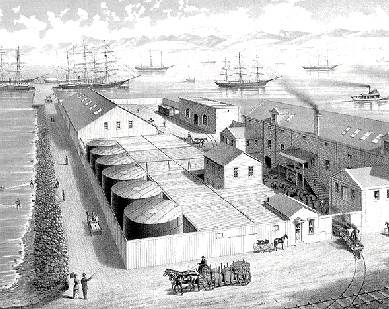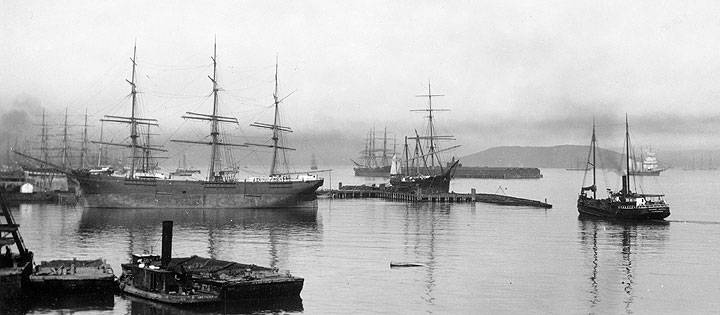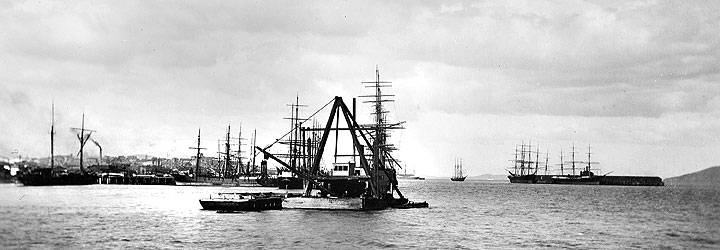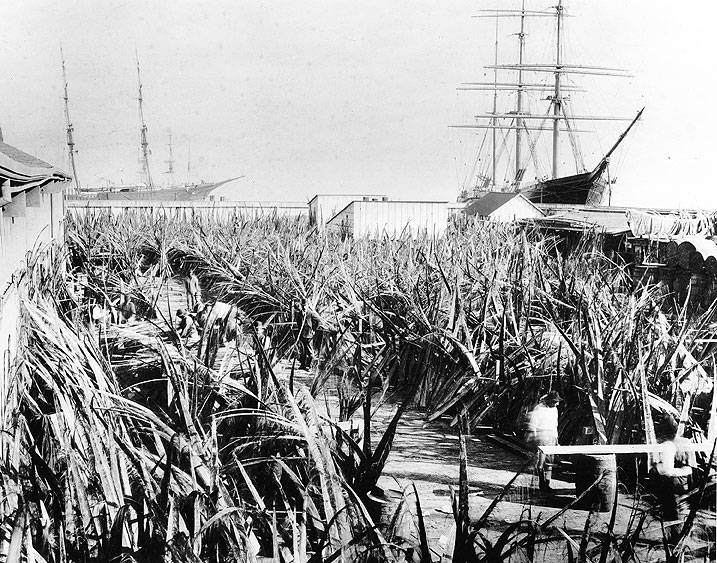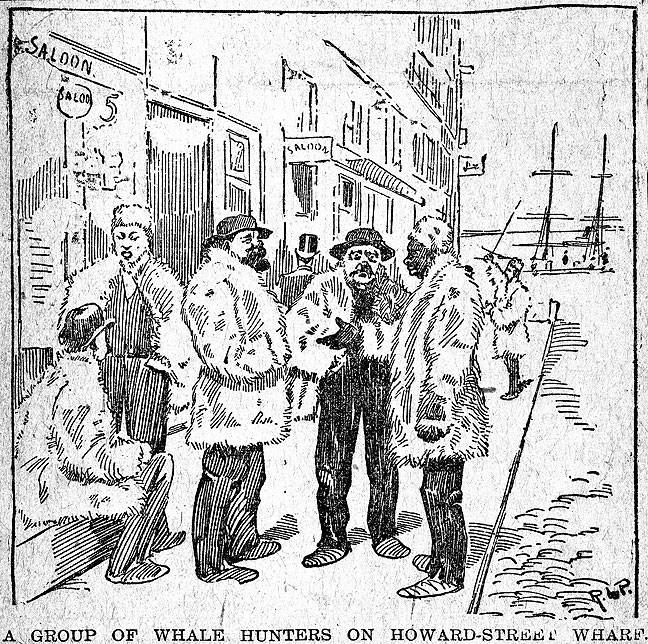The Largest Whaling Port on the West Coast, 1880s
Historical Essay
by Chris Carlsson
Arctic Oil Works was established on Illinois between 17th and 16th Streets in 1883 to produce refined oils from seals, whales and elephant seals. Not well-remembered today, the whale, along with elephant seals, walruses, and sea-lions, were the primary source of oil for illumination and lubrication for the burgeoning industrial revolution during the early decades of San Francisco’s urban growth. Electricity was still years away, and the petroleum oil industry didn’t really get going until the last decade of the 19th century.
Image: Bancroft Library, Berkeley, CA
Arctic Oil Works T-shaped pier extending into bay. Steam schooner Point Arena and Governor Tilden in this image.
Photo: San Francisco Maritime National Museum, A11.22.463.1n
T-shaped Arctic Oil Works pier with Mission Rock at right.
Photo: San Francisco Maritime National Museum, A11.22.463.n
In 1890, baleen from the jaws of whales dries in the Arctic Oil Works yard. After drying it was cut into stays for corsets, collars and umbrellas, as well as for buggy whips.
Image: Bancroft Library, Berkeley, CA
Whale hunters on the Howard Street wharf, north of the Arctic Oil Works, c. 1880s.
Image: San Francisco Examiner, courtesy San Francisco Maritime National Museum, A12.21.552n

